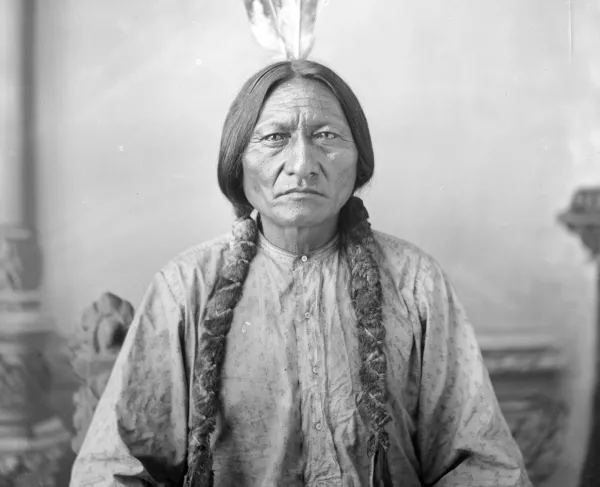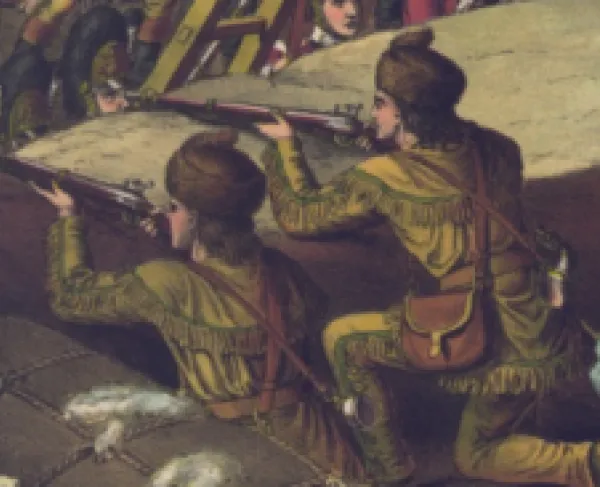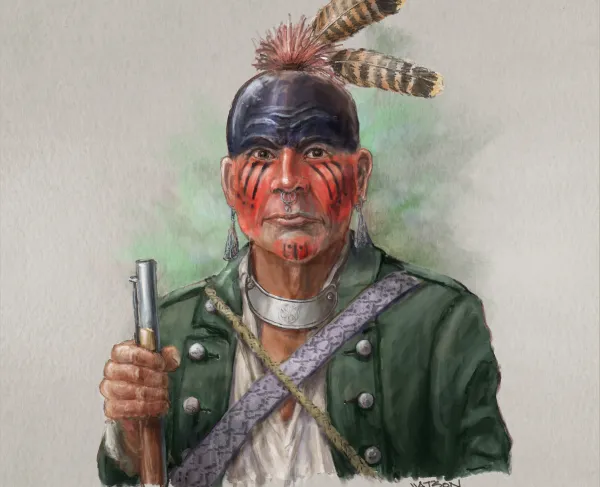Sitting Bull

Sitting Bull was born in 1831 to a prominent Hunkpapa Lakota family, as both his father and two uncles were chiefs in the tribe. As a child he was given the name Jumping Badger and was called “slow” due to his demeanor. Throughout his childhood, he participated in traditional games and competitions that tested a young man’s skills. By the age of 10, he had killed his first buffalo and had counted coup on an enemy by the age of 14 — earning him the name of Sitting Bull.
Having proven his bravery and skills against enemies, Sitting Bull became a member of several societies like the Kit Fox Warrior Society. He helped co-found the Midnight Strong Heart Society which were select members from the Strong Heart Society where he was honored as one of the two Sash Wearers in the group.
During this time, Sitting Bull advocated against the Lakotas forming relationships with white settlers. However, there were many members within the tribe that were open to developing these relationships for commerce and diplomacy purposes. Sitting Bull was opposed to this and continued to avoid white settlements until later in his life.
In 1866, the Lakotas — led by Chief Red Cloud — had launched a campaign against forts along the Bozeman Trail. After two years of hostilities, the monumental 1868 Treaty of Fort Laramie was signed. The Lakotas in attendance agreed to end hostilities and move to a reservation in what would later become South Dakota.
Sitting Bull had refused to be a part of these treaty negotiations and, therefore, did not agree to its conditions. He believed that the conditions only applied to those who agreed to the treaty in the first place. Thus began a deep fracture between the Lakotas: those who followed Red Cloud onto the reservation and those who followed Sitting Bull and continued their way of life.
In the summer of 1874, gold was discovered in the Black Hills. The territory belonged to the Sioux according to the 1868 Treaty of Fort Laramie, but, after the discovery, the United States sought to buy the land from them. Despite the Sioux’s opposition to selling their land, the United States still continued allowing white settlers to move to the Black Hills. The Lakotas — including Sitting Bull — were given until January 31, 1876, to move onto their reservation otherwise they would be considered hostile against the U.S government. Sitting Bull and the non-treaty Lakotas, as they were called, remained outside the reservation.
Months later, on June 25, Lt. Col. George Armstrong Custer and his 7th Cavalry attacked the Lakotas and Cheyenne along the Little Bighorn River. Here, one of the most famous battles in American history took place — the Battle of Little Bighorn. Throughout time, causalities from the battle have varied on both sides. Overarchingly, the battle was a huge loss for the U.S. government and resulted in the death of Custer and five of his companies. The aftermath of the battle meant ceaseless harassment from the government to non-treaty Indians.
Realizing the constant threat of the U.S. government, Sitting Bull and his followers decided to head north to Canada where they lived for four years. However, life in Canada was extremely hard — winters were harsh, food was scarce, and many people suffered from disease. Eventually, people began leaving and heading towards the United States to live in the reservations. Sitting Bull, realizing the inevitable, surrendered in 1881 at Fort Buford.
Living at the Standing Rock Agency, Sitting Bull found it hard to adapt to his new life in the reservation and refused to learn how to farm. Thanks to the Battle of Little Bighorn, Sitting Bull had become a living legend and had garnered enough fame that he was able to live off of his fame by charging money for autographs and pictures. At this time, he also began a friendship with Buffalo Bill Cody, who was touring with his production of the famous Wild West Show. After some convincing, Sitting Bull agreed to accompany Buffalo Bill on his production but was only allowed to tour for one season.
In 1890, the Lakota Indian police were sent to investigate the Ghost Dance movement — a spiritual movement that hoped to bring an end to westward expansion and bring peace to the tribes. Sitting Bull did not fully embrace the movement albeit he was curious about it. Fearing he and his followers would leave the reservation, the Indian Police apprehended Sitting Bull. After escorting him from his home one morning, the proud chief didn’t go without a fight and the commotion attracted a crowd. In a matter of minutes, shots were fired. By the time the shots stopped, Sitting Bull was dead.
Sitting Bull passed December 15, 1890, and was buried at Fort Yates.





